
Ten Tips for a Successful Author Visit (For Authors and Illustrators)
Yesterday I shared ten tips for successful author visits aimed at teachers and librarians (you can see that post here). Today, I want to share another ten, but this time aimed at presenters. Visiting schools and libraries can be lots of fun, and also form an important part of your income stream. I’ve done lots and lots of these visits, and the following tips are some of the things I’ve learnt along the way.
1. Advertise your availability. If you want to do school and library visits, you need to let schools and libraries know you are available. List on your website (you do have a website, don’t you?). You can als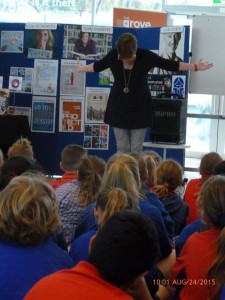 o create a flyer and distribute it by mail, or at conferences you attend. Word of mouth is also a wonderful tool.
o create a flyer and distribute it by mail, or at conferences you attend. Word of mouth is also a wonderful tool.
2. Be upfront. It is easier to discuss payment and conditions at the time of the booking, than it is on the day you turn up, or after the event. State your rates, how many sessions you will do in a day, audience size, age groups you can cater for and so on. Talking about money can be uncomfortable, but it is necessary, which leads me to number 3:
3. Charge for your visit. With few exceptions, you should ask for ASA Rates for your time. An author/illustrator visit is an educational experience for children and helps teachers and librarians to motivate kids to read/write/draw. The rates may sound high when you’re starting out, but trust me you will earn them – it is a lot of hard work(fun, but also exhausting).
4. Be aware of the difference between promoting your book and promoting literacy. If your visit is in school time, it should be more than just a sales pitch. You are being paid for your time, so make sure you are giving value for students and for teachers. What are children going to learn from you – it might be something specific to your book, or about books and reading more generally.
5. Prepare your presentations. Work out what you have to say and how you are going to say it. A ‘meet the author’ session, for example, might include a reading of your book (or part of it), a talk about the research or creative process, and time for questions. If you’re an illustrator, you might show how you drew the main character. A writing workshop might teach a specific writing skill. Think about your own skills, the book, and the target age groups.
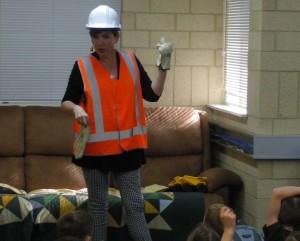 6. Have props or visuals. Kids like having things to look at. Some presenters use Powerpoint presentations, which can be wonderful when used well. A good one will be high on pictures and low on text. other props could be puppets, costumes, historical artifacts, you name it.
6. Have props or visuals. Kids like having things to look at. Some presenters use Powerpoint presentations, which can be wonderful when used well. A good one will be high on pictures and low on text. other props could be puppets, costumes, historical artifacts, you name it.
7. Know what you are going to say. This is kind of like 4 above, but this time I’m talking about knowing your presentation. Don’t read from a script or written speech, and certainly don’t read a Powerpoint. If you are nervous, practice. A lot. In front of a mirror, in front of friends, in front of your cat. Use your rehearsals to work out timing, remembering timing can be affected on the day by your nerves, by interruptions and by questions.
8. Be flexible. Be prepared for curve balls. What will you do if the Powerpoint doesn’t work? What will you do if you leave your book at home? What will you do if Johnny in the front row farts or – worse still – throws up? I was once booked to run a writing workshop for 20 kids. On the day 80 kids came into the room – and not one of them had anything to write with. Be prepared for misbehaviour. It won’t happen every time, but remember you are dealing with schoolchildren and, as such, kids will misbehave. They might call out, or talk when you are talking, or throw things at you. How are you going to respond? It is good to remember that the teachers should be there in the room and you can ask them for help in this area, but it is great if you can avoid interrupting the class to do this. I try not to expect perfect behaviour, and only stop my presentation if the behaviour is affecting other children’s ability to see or hear me.
9. Use prizes/rewards. Small giveaways such as bookmarks are very popular. Of course, if you are a softy like me, you might find it hard to give away only one or two, particularly for younger children. I tend to have a few things on hand in case someone comes up with a particularly brilliant question or answer, or if I need a volunteer top help out with something.
10. Follow up after the visit. Ask the person who booked you for a few words of written feedback via email. Take the time to thank them for having you. Also take the time for yourself to think about what did and didn’t work well – and why.
Have I missed anything? If you have any tips for school visits, I’d love to hear them. Leave a comment.
Wandering Words #6
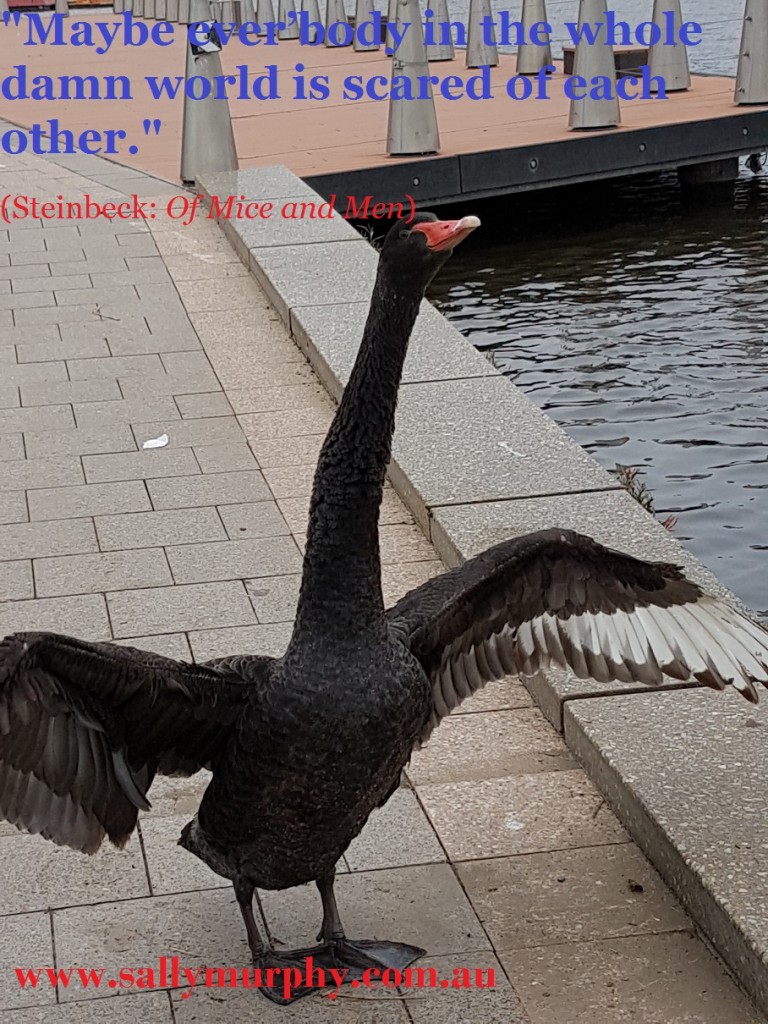
Ten Tips for a Successful Author Visit (For Teachers and Librarians)
Bookweek is coming up and I’m starting to prepare to visit schools and libraries around the state. This made me think about visits I’ve done in the past (I’ve done hundreds) and what did and didn’t go well. So, I thought I might write a couple of posts offering some quick tips for teachers/ and librarians (today) and authors and illustrators (tomorrow) to make visits run smoothly.
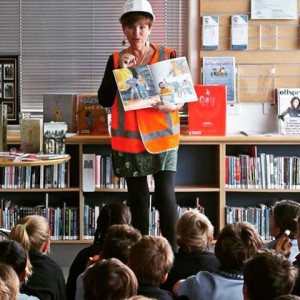
So, here goes: ten ways to prepare for and run a successful author visit:
1. Book your author/illustrator well in advance. Bookweek, in particular, is a very busy time of the year, and organised schools/libraries will have booked at the start of the year, or even before. I already have a booking for Bookweek 2017, yet had a request for a 2016 visit just last week (needless to say I had to say no).
2. Research your presenter. Know what they write and who it is aimed at. Don’t book a YA Author for your kindergarten audience. Also see if you can find feedback on their previous visits. You want to know that your presenter is competent.
3. Be prepared to pay. Most Australian authors/illustrators will charge ASA Rates, which you can find here. They are not cheap, but the cost covers both the presentation time and the preparation time, as well as the years of experience your presenter has.
4. Discuss the visit with the presenter. Is there a specific topic you’d like covered? I’ve had over 40 books published, so can tailor my presentations to all kinds of age groups and topics, but this will be more successful if I know in advance. Also find out if the presenter has any requirements – audiovisual equipment, an easel or whiteboard, chocolate (this is always a good thing).
5. Arrange your audience well in advance. If you are a local library, advertise to local schools well ahead of time. It takes a lot of planning at the school end to organise an excursion. If you are a school librarian, again, make sure that class teachers know about the incursion well in advance of it happening.
6. Promote promote promote. Once you’ve worked out who your audience will be, promote the visit to them. Make a display about the author, including their books. Talk up the visit – show the children you are excited, and encourage them to be excited too. 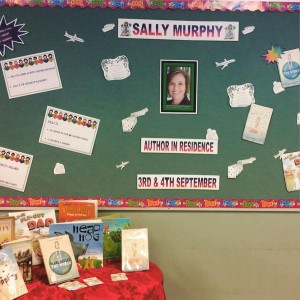
7. Check if you have the author’s books in your library. I have visited lots of schools where my books aren’t in the library, or where the one I have come to talk about is the only one not in the collection. When kids hear about a book, they want to borrow it.
8. Encourage (insist if you can) class teachers to be present for the author visit. Lots of school visits are scheduled so that the students see the visiting author during library time, while the class teacher is on other duties. The risk is that there is no follow up discussion or benefit from the visit. The best visits I have are those where the teachers have talked with the students beforehand about the purpose of the visit, and often result in kids going back to class to write or read or otherwise build on what they’ve heard from me.
9. Set up a suitable space for the visit before the author arrives. If you only have the author for an hour, avoid using a large chunk of that time to get chairs in place, or a projector set up. It’s always great to have a glass of water for the author and tea/coffee/lunch available if they are there for the day.
10. After the visit, chat with your fellow staff, the author and the students about how it went. Get feedback so you know what did/didn’t work. And, start planning for next Bookweek.
If you are a teacher or librarian and think I’ve missed anything important here, I’d love to hear it. Leave a comment. Tomorrow, I’ll have ten tips for authors.
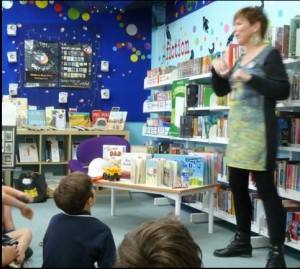
5 Minute Promo: Day 31
Hello! You’ve arrived here just in time for the final installment in my 31 day challenge. Thanks for enjoying the journey with me,. I’m going to get straight to today’s task, because I’ll say more in my other post. Which other post? The one set out in today’s task.
5 Min Promo #31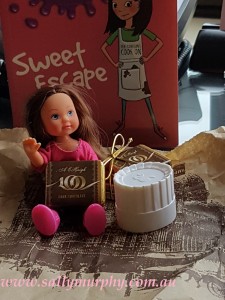
Write a blog post wrapping up your promotional efforts for the month. What did you do, why did you do it and what did you learn? You can see my post below for an example. I’d also love to hear your thoughts so feel free to leave a comment on what you thought of this challenge.
Thanks for joining in!
Five Minute Promo Wrap-Up (Or the Month of Sage)
Phew. It’s the last day of July and I’m weary, but in a good kind of way. It’s been a really busy month: new book out July 1, two conferences interstate and a writing retreat a little closer to home, progress made on my Doctoral project AND two new book contracts. In the midst of all that I posted more than forty new blog posts here on my website, most as part of my Five Minute Promo Challenge. And it’s this last I want to reflect on today.
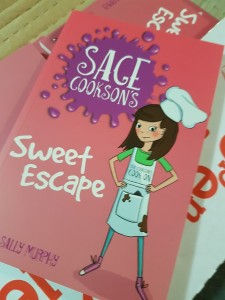 Back in June when I was planning my month, I realised that with Sage Cookson’s Sweet Escape coming out at the start of the month, and all that busyness following soon after, I realised that if I was going to promote Sweet Escape effectively I was going to have to do lots of small things rather than one or two really big ones.I started making a list of the things I could do – and, pretty soon, the Five Minute Promo blitz began. Every day for the month I did a quick five minute online task to promote the book. And, because I realised other authors and illustrators might be interested in quick things they could do to promote their own books, I shared each new idea here on the blog and on Instagram.
Back in June when I was planning my month, I realised that with Sage Cookson’s Sweet Escape coming out at the start of the month, and all that busyness following soon after, I realised that if I was going to promote Sweet Escape effectively I was going to have to do lots of small things rather than one or two really big ones.I started making a list of the things I could do – and, pretty soon, the Five Minute Promo blitz began. Every day for the month I did a quick five minute online task to promote the book. And, because I realised other authors and illustrators might be interested in quick things they could do to promote their own books, I shared each new idea here on the blog and on Instagram.
Ideas ranged from taking a styled photo of the book for Instagram, to setting up and maintaining a Facebook Author Page, to Tweeting about the weather. If you want to see the rest of the ideas, you can find them here on the blog.
So, here’s what I learned:
1. There are lots of things which can be done in five minutes (or less) to promote a new book, or even a backlist title.
2. Planning ahead makes promotion simple. I wrote my list of 31 tasks on my whiteboard and photographed each task as I added it to the list, so I had not only the 31 tasks, but also an Instagram-ready photo for each day. This meant that all I had to do each day was carry out my task, and post the new task on Instagram. I also wrote a quick blog post about each task, explaining it to those who might be interested. Again, I did these in advance: writing them in blocks of four or five as I had time. It’s amazing how much work you can do on an airplane if you choose not to watch a movie.
3. Most of the tasks could be completed in five minutes or less, but it is easy to forget time and keep going well beyond five minutes. If you want to promote in only five minutes you must be careful not to get distracted by the social media platforms you are using.
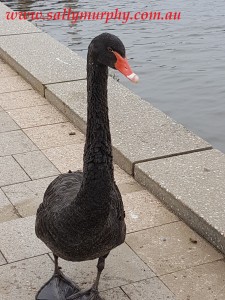
4. Variety is the spice of life. Because I mixed the tasks up over the month I didn’t get bored. I had Each new task was slightly different from any other, so I was kept on my toes coming up with new content, new ways to spread the word.
5. Regular posting boosts engagement. Actually, I already knew this, but this time I decided to measure it. At the start of the month I recorded how many followers I had on Twitter, Facebook, Pinterest and Instagram. As the month progressed, I checked these regularly and tweaked what I was doing. The most obvious one of these was on Facebook, where I had only a couple of new followers to my page until I followed my own advice and sent invitations to any of my Facebook friends who I thought might be interested in my author page. This lead to several new followers, and a direct link to the page from my personal Facebook wall reminding my friends that all my writing news was on my Facebook page lead to several more. Over the course of the month I attracted 38 new followers. The number was higher on Instagram (73 new followers) and Twitter (99 new followers). The lowest increase was in Pinterest, where I attracted just 1 new follower.
Of course the number of followers is not always an indication of engagement, especially on Twitter, where people can retweet your tweets on that topic(which are this seen by people who don’t follow you) and also search by hashtags and see your tweets without following you. Instagram similarly uses hashtags, and Pinterest does too, to a lesser extent, and in both of these again people can see or share without necessarily following you. On Facebook, the posts which had the most views were those which people shared, and were generally the posts I made not directly about my books – such as interesting blog articles relating to children’s literature.
So, I blogged and tweeted and instagrammed and pinned and facebooked and more for a whole month. Measuring success in terms of sales is difficult (being traditionally published I tend top see sales figures twice a year) but as well as the new followers I have noticed interest in Sweet Escape not just from friends but from people in the industry. At both the conferences I attended and the writing retreat, people mentioned the 5 Min Promo challenge and/or Sweet Escape, based on what they’d seen on social media.
For me, then, the measure of success is that I had fun and also managed to spread the word about the book. Would I do it again? Of course – especially seeing I try to use social media every day already as part of my long term promotional strategy. But first, I might take a little nap.
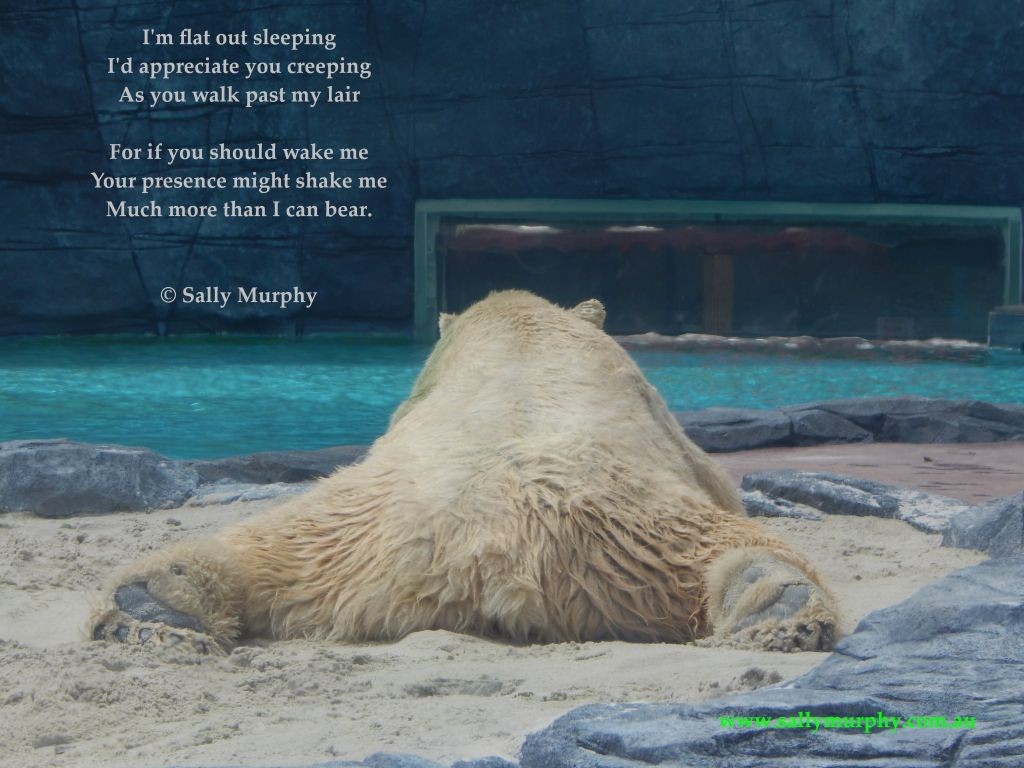
- « Previous Page
- 1
- …
- 59
- 60
- 61
- 62
- 63
- …
- 197
- Next Page »